Review: BlackBerry Bold 9900
Aug 25, 2011, 12:07 PM by Eric M. Zeman
T-Mobile's version of the BlackBerry Bold 9900 has a few significant advantages over the Bold 9930 being sold by Verizon Wireless. Phone Scoop reveals what they are.
Form
Is It Your Type?
Author's note: Since the Bold 9900 is practically identical to the 9930, many portions of this text have been copied from Phone Scoop's review of the 9930. Rest assured, however, we put the 9900 through all the same tests that we did the 9930.
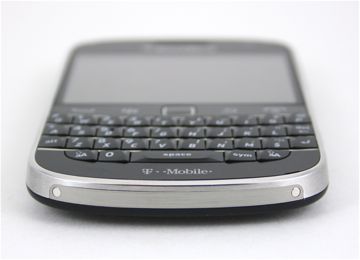
T-Mobile introduces its first "4G" BlackBerry, the Bold 9900. While the hardware and software is the same as the Verizon-branded 9930, the 9900 has a few notable differences. With its great keyboard, touch screen, and BlackBerry 7 operating system, the seeker of a 4G smartphone has something to be excited about.
Body
The new BlackBerry Bold 9900 is RIM's high-end smartphone focused on those who take email seriously. It bears a strong resemblance to its predecessors, but still manages to carve out its own identity in the monoblock QWERTY space. It exudes class and professionalism.
The 9900 has a solid weight to it and feels comfortable in the hand. RIM has managed to trim a few millimeters here and there and the smaller footprint makes a big difference. (Previous Bold designs were gigantic.) The front surface is made from high-quality plastics rimmed by a band of brushed metal. The back surface features soft-touch paint, which surrounds the glossy battery cover. The construction of the device is top-notch. RIM has always been able to churn out high-quality hardware, and the Bold 9900 is no different.
The 9900 features a 2.8-inch display. The typical set of BlackBerry controls are below it, which include Send, BlackBerry, Back, and End buttons. These buttons are all flat and flush with the surface. They have good travel and feedback. An optical trackpad separates this quad of buttons. RIM uses the best optical trackpads in the business. The 9900's is responsive, adjustable, and is great for fine-tuning actions on the display.
The 9900's keyboard is flat-out incredible. It is easily the best physical keyboard I've ever used. RIM nailed the combination of size, shape, and action for each key, making it effortless to use for composing messages. Current BlackBerry owners might upgrade to the 9900 for the keyboard alone.
I truly wish that RIM would add a dedicated period button and a dedicated "@" button to its keyboard designs. On the 9900, each requires at least one extra key press to use. These characters have become essential for interacting with the web. Sure, there's the space-space trick, but that doesn't help when filling out web forms. Instead, the 9900 includes a dedicated "$" key. Really, RIM? Really?!? In what universe do people use the dollar symbol more often than the period? Also, what about a comma key?
The 3.5mm headset jack and microUSB port are built into the left edge of the 9900. I prefer the headset jack to be on the top of my phone, but the left side is where RIM traditionally places it.
The volume controls are on the right edge, close to the top. They are separate buttons, rather than a toggle. These buttons are small, but are angled slightly so that they are still easy to find and tell apart. The travel and feedback is good. A mute button is nestled between the volume keys. It is harder to find and use. There is also a user-adjustable application key on the right edge. Out of the box it opens the camera by default, though it can be set to open whatever the user wants. It has good travel and feedback.
RIM has done away with the traditional screen lock and ringer silence buttons on the top of the Bold 9900. Instead, there is a single screen lock button in the center. It does double duty. It will silence the ringer when there's an incoming call, as well as lock the display and wake it from sleep.
The battery cover pops off with a little leverage from your thumb. The microSD card slot is located under the cover, and sadly requires that you remove the battery to access it.
The Three S's
Screen
The 9900's display measures 2.8 inches across the diagonal and packs in 640 x 480 pixels. Add in what RIM refers to as "Liquid Graphics" and what you have is the best display I've seen on a BlackBerry. On-screen elements such as icons and graphics look fantastic. Web sites are pleasing to the eye, and photos/video look very good. Perhaps the most impressive feat is the 9900's performance outdoors. I was easily able to use the 9900 when under direct sunlight. Emails popped off the screen, and even the camera worked well. Such good performance outside has become a rare quality in phones.
Signal
The 9900 runs on T-Mobile's HSPA+ 4G network. Signal performance was excellent. The signal indicator consistently showed a strong signal, and the 9900 maintained a tight connection to T-Mobile's network. While it did slip down to EDGE a few times (mostly when indoors), the 9900 never lost T-Mobile's network entirely. The 9900 didn't miss any calls, didn't drop any calls, and was always able to surf the web swiftly.
Sound
The 9900 performed better in the voice quality department than its Verizon-branded cousin. As with the 9930, earpiece volume of the 9900 was very good, which means calls in areas with lots of background noise are easy to hear. Quality was good overall, though every so often I noticed a slight hiss in the background. The speakerphone performed very well. Set to maximum volume, it wasn't quite loud enough for me, but the clarity and quality of the calls made up for the volume deficiency a bit. Ringers and alert tones can be set to piss-off-the-neighbors volumes, so you'll always know when you've got a call or message headed you way. The vibrate alert was plenty strong.
Battery
The Bold 9900's battery didn't perform quite as well as that of the 9930. Where the 9930 lived through nearly two days of use, the 9900 lasted more like a day and a half. Intense web browsing and social networking really had an impact on battery life. You'll be fine if you forget to charge the 9900 at night, but only for a few hours.
Basics
Menus
The Bold 9900 runs BlackBerry 7, which is a refreshed version of RIM's system software. There are tweaks aplenty compared to what was available in BlackBerry 6, but they are barely noticeable. The home page has a number of different elements with which to interact. From top to bottom, the basic home screen has the status bar, the notification bar, main screen/wallpaper, and the app tray.
The status bar — where the clock, signal indicator, battery meter, etc. are located — is the top-most element. Press the time at the top from the home screen, and it opens up a tray of tools, such as network controls (WI-Fi, etc.), the alarm clock, and other basic settings. This feature doesn't work from other screens, only on the home screen.
The notification bar acts similarly to the drop-down notification shade in Android. Tapping it lets users quickly get a look at all of the unread messages they may have received. This includes email, SMS, MMS, BBM, Twitter replies/DMs, and Facebook notifications. You can see the first handful of each message type, and view info such as the sender and subject. Want to hide all the notifications? Tap the bar again and it goes away. If you do want to read a message, select it and the notification app will open the message in whichever messaging service it belongs to.
The app tray is where users will really be able to customize BlackBerry OS 7 handsets. The tray offers five different user-configurable home screens / menus. The first (and default) screen lists all the apps. The second lists those used most frequently. The third shows all downloads. The fourth is reserved for media. And the fifth is for user-chosen favorites. When the app tray is open users can swipe sideways between these five different home screens.
The Universal Search tool has been updated, though it behaves mostly as it did in BlackBerry 6. For example, if I type "Phone Scoop" while on the home screen, the Universal Search pulls up all the relevant items on the 9900 and delivers them to the desktop. This includes contacts, web sites, and so on. Do the same thing for quick access to a contact, or song, or any other application that you don't want to peck through the menus to find. If what you're looking for isn't on the phone, it offers web-based tools (YouTube, BlackBerry Maps, etc.) to continue searching.
Press-and-hold gestures can be used to open secondary menus in some applications. For example, in the contact application, the press-and-hold gesture conjures up the options menu, offering shortcuts to calling, texting, emailing, editing the contact and other actions. Use press-and-hold on the home screen, however, and the options will include moving, opening, deleting, or hiding the selected app, among other actions.
The real improvement doesn't come so much from BlackBerry 7 but from the fact that the 9900 is a touch phone. Being able to reach up with your thumb and select menu items instead of using the trackpad saves gobs and gobs of time.
Oddly, I noticed some hiccups with the 9900's performance. Mostly it was failure of the screen to register presses. Attempting to open the main app tray, for example, often took two or three presses on the screen. I can't say if this is due to a faulty display or faulty software, though the 9900's software wasn't slow to respond anywhere else.
Calls/Contacts
Calls
Pressing the send key opens the phone application and defaults to the call log. The call log looks almost identical to how it performed in BlackBerry 6 and BlackBerry 5. My favorite feature is that the press-and-hold gesture works in the call log. Press-and-hold a call record, and the 9900 offers up an options menu.
With a call in progress, the options presented are similar to what is seen on other touch devices, including quick access to the speakerphone, mute switch, and so on.
Contacts
As mentioned earlier, the Universal Search function alone adds a lot of power to the 9900, BlackBerry 7, and how users will interact with their contacts. Being able to type a contact's name from the home screen and go directly into a call or the contact app really speeds up many communication functions. The contact app also displays recent communications when viewing a contact card. Knowing when you last called or emailed someone at a glance is helpful. Want to call them? Press their number. Want to email them? Press the email address.
The calling and contact apps are amazingly useful, and work together seamlessly as one in order to make interacting with calls and contacts as painless and easy as possible.
Messaging
BlackBerrys are dedicated messaging devices, and the 9900 covers all the bases and then some.
First up, email. Whether you're a corporate user or a GMail user, the 9900 handles Exchange, POP3 and IMAP4 accounts with ease. Users can add up to 10 different email accounts to the 9900. It can display HTML email with no problem and swiping left or right will take you to the next/previous email. Options abound, and there are simple touch controls to perform actions such as replying, forwarding, and so on.
The SMS/MMS client offers threaded messaging, which are defined in text bubbles that help to visually separate the different sides of the conversation. Adding any sort of media to outgoing messages is a breeze. Content is nicely embedded in the text bubbles.
BlackBerry Messenger 6 is on board, of course, to allow for PIN-based messaging. This new version lets users interact with one another from within select connected applications. With it, users can pull up a BBM contact from within a connected app and share the application they are using with that contact without actually launching BBM. For example, I was able to share URLs with BBM contacts directly from the BlackBerry Browser. Convenient.
As for instant messaging, Google Talk, Windows Live, and Yahoo are supported. AIM isn't. If you add a Gmail account to the 9900, the software automatically sets up Google Talk, which is pretty cool.
On the social networking front, the 9900 comes with official Facebook and Twitter applications pre-installed. Each works well enough of its own accord to keep users in touch with their circles of friends, family and colleagues. The social networking apps are also integrated into the contact app and messaging functions, making it easier to communicate.
There is also a Social Feeds application that streams status updates and posts from Facebook, Twitter, Google Talk, Podcasts, and user-defined RSS feeds. If you'd like to consume all your social networking in one spot, this app lets you do it.
Extras
Media
Music
RIM hasn't changed the music app much. When viewing artist, album, or song lists, album art is displayed next to the file or folder in question. Once you've chosen to listen to a song, the 9900 automatically displays cover art in a coverflow appearance for the current playlist. This means that while you're listening to the music, you can scroll through your library visually via album cover art. It's neat.
The music player can be sent to the background and users may listen while doing other things, such as browsing the web. Incoming calls pause music, which resumes once the call is disconnected.
There are some advanced options, but not too many. There is an audio boost; captions can be turned on/off; and music can be enhanced when the 9900 is used with headphones.
As for syncing, the latest version of BlackBerry Desktop manager is helpful for stuffing the 9900 full of your favorite playlists. It can add songs via USB cable or Wi-Fi.
The media player also has access to the Amazon MP3 store installed, and Slacker Radio is on board as well.
Video
The 9900 comes loaded with a few video features. First, there is a dedicated video application that can play sideloaded or captured content. There is also a YouTube application for managing and interacting with your YouTube account.
Nice as these options are, they don't make up for the fact that the 9900's screen simply isn't meant for consuming video. I'd never think to watch a movie on it, even though the video content I sideloaded looked really good on the 9900's solid display. It's just too small.
Camera
Camera
Disappointingly, it looks as though RIM hasn't update the camera software, either.
Leaving the side convenience key set to launch the camera is the best and fastest way to get at it. It launches in perhaps a second or so. The 9900 has a 5 megapixel camera with fixed focus (what?!?) and an LED flash.
The physical button can be used to take pictures, as can a software button on the 9900's display. Some basic options can be controlled from the viewfinder without calling up a separate menu. The flash can be turned off, on or set to auto. The shooting mode can be changed, which includes a wide list of options (auto, face detection, portrait, sports, etc.). The BlackBerry key can be used to get at several other settings, such as resolution, where pictures are stored, and so on.
When you want to take a picture, the 9900 responds pretty quickly. It shoots and saves pictures in about a second, which is as good as you can expect from a phone.
Gallery
Similar to the BlackBerry 6 software, the BlackBerry 7 camera software puts a thumbnail of the most recent shot in the corner of the viewfinder. This means you can see the picture you last shot. Press it, and it opens the gallery application.
The 9900's gallery app comes across as bare bones compared to some of the competition. Pictures can be viewed in a grid. From the main gallery view, pictures can be selected, moved, shared, and all that you expect.
Once you open a picture, you can zoom through the entire gallery by swiping in either direction. Editing features are limited to rotating, cropping, and zooming. Pictures can be shared via email, MMS, Bluetooth, Twitter, GoogleTalk or Facebook.
Photos/Video
Photos
I was secretly hoping the 9900 would somehow perform better than the 9930 with respect to photos. I can't say that it did. While images I captured were, as a group, decent enough to look at, none of them were excellent. Indoor shots showed a lot of grain and soft focus. Outdoor shots were more accurately in focus, and colors/white balance was fine, but exposure was off. It also had a hard time balancing settings with bright and dark regions, which led to plenty of photos with both under and overexposed regions. Sure, some of the photos are worth sharing, but I've seen better performance from phones with 3.2-megapixel cameras.
Video
The Bold 9900 shoots video at a maximum resolution of 720p HD. On average, results are better those generated by the still camera. While both indoor and outdoor footage showed more grain than I'd like, it was dialed down to acceptable levels when shooting in bright sunshine. Focus was good, details were visible, and there were no odd problems, such as ghosting, or stuttery movement. Again, not the best video results from a phone, but still pretty good.
Browse/Customize
Browser
The latest BlackBerry browser is a capable piece of software, though it still manages to fall short of the experience offered by Android, iOS, and Windows Phone 7. Browsing the web on the 9900 was definitely speedier than on the 9930. Web sites loaded noticeably faster, and the 9900's browser stalled less often than the 9930's. T-Mobile's HSPA+ network is much faster than Verizon's EVDO 3G network.
Once again, having a touch screen really helped improve the browsing experience compared to previous BlackBerry Bolds, but the small dimensions of the display made gestures such as pinch-to-zoom a bit difficult to use. Drawbacks aside, the software controls are reasonably easy to figure out, and offer a wide array of options for controlling the browser and sharing the contents discovered therein.
Customize
Because BlackBerrys are intended for business users, they offer far more controls, tools, and options than any consumer will ever bother to explore. The basics, such as wallpapers, ringtones (and ringer profiles), themes, fonts, etc., are all handled easily with the settings tools, which have been broken down in to easier-to-manage groupings.
The home screen can also be customized to a certain extent. It's not as vastly customizable as an Android handset, but users can populate the five different screens with a number of apps, shortcuts, and so on.
Extras
Apps
The Bold 9900 ships with a decent number of applications on board, but thankfully steers clear of reaching bloatware levels. BlackBerry App World may not have the hundreds of thousands of applications that the Android and iOS app stores do, but there are still plenty of apps available in the easy-to-use RIM App World software. You can also add software from sources other than App World, such as downloading Google apps directly from Google.
Bluetooth
The Bluetooth functions of the 9900 worked perfectly. Pairing with headsets, speakers, other phones and PCs was a snap. Call quality through mono Bluetooth headsets was OK. Quality of music through stereo Bluetooth speakers was pretty solid. Passing files back and forth between other handsets or computers was not a problem.
Clock
Press the screen lock button, and the time is visible in digital form at the top of the display. It's not very large. I wish the lock screen had a bigger clock available to it. Alternately, you can set the 9900 in "bedside mode". This essentially assumes that you're going to place the 9900 on a nightstand within arm's reach when you're in bed. It will show the clock and let you interact with the alarm. Bedside mode can also be activated when the 9900 is charging, which means the clock is visible any time the 9900 is plugged in. Bedside mode isn't very convenient for quick time checks, however.
GPS
The 9900 is pre-loaded with BlackBerry Maps. No TeleNav from T-Mobile. BlackBerry Maps does an acceptable job of mapping directions from point A to point B. The 9900's GPS radio was highly accurate, and able to locate me quickly and to within about 20 feet. If you want Google Maps, you'll have to download it directly from Google's mobile web site.
Video
Below is Phone Scoop's video tour of the BlackBerry Bold 9930 for Verizon Wireless. The hardware is 100% identical to the Bold 9900 for T-Mobile. The software is about 90% identical, save for a few Verizon-branded services that have been swapped out for T-Mobile-branded services. Otherwise, they are the same device.
Wrap-Up
Research In Motion did a very good job with the BlackBerry Bold 9900. It is not radically new by any stretch of the imagination, but it is a significant upgrade compared to what preceded it.
The hardware is probably the best ever designed by RIM, and offers a perfect combination of controls, materials, and quality manufacture. I can't state strongly enough how fantastic the QWERTY keyboard is.
BlackBerry 7 may be more polished than previous versions of RIM's operating system but it is still too menu driven and reliant on layer after layer of folders and sub-folders. Messaging, social networking, and calling functions are top notch, and the Bold 9900 is a capable media device, too. Thankfully, the 9900 improves on the 9930 with better signal, voice, and web performance. To me, the slight trade-off in battery life is worth it.
Is the 9900 a good smartphone? Yes. Is it one of the best to come from Research In Motion? Yes. Is it worth picking over an Android smartphone or the iPhone? That's a tough call. Obviously the 9900's claim to fame is its outstanding keyboard, and that's the feature I'd hinge my decision on.
Bottom line, if you absolutely must have a great, physical QWERTY keyboard and need the added security features of a BlackBerry, you can't go wrong with the Bold 9900.

Comments
Blackberry is back!
A step in the right direcion


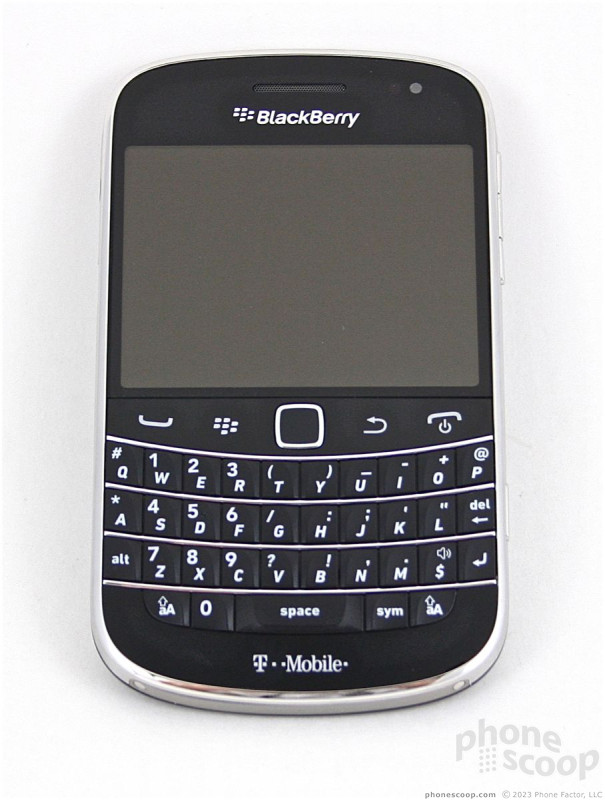












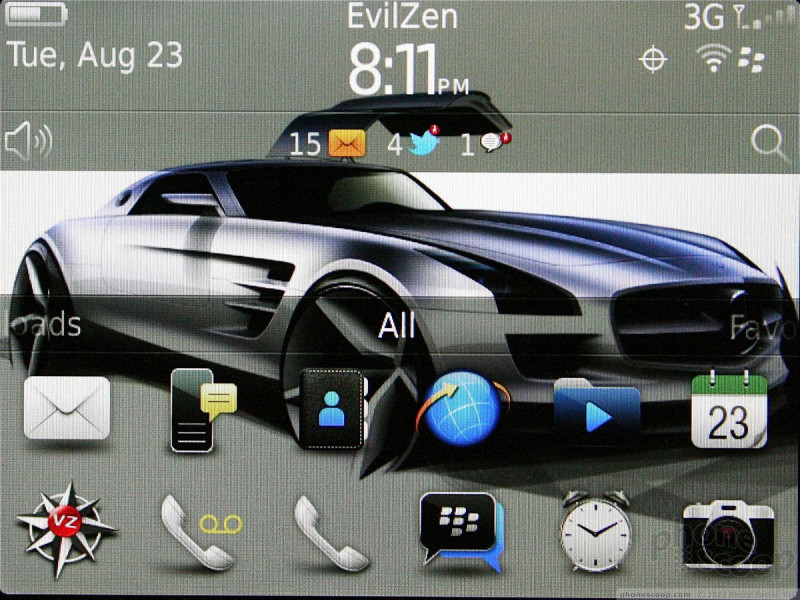

















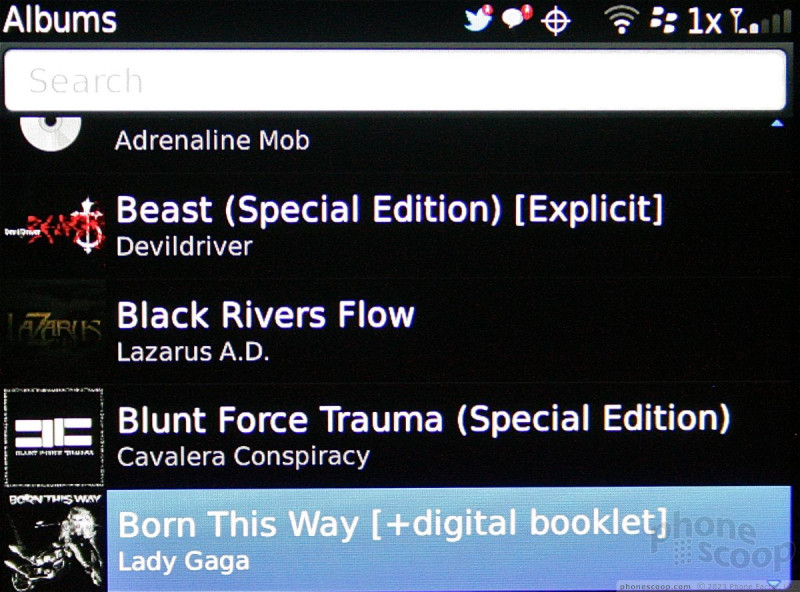



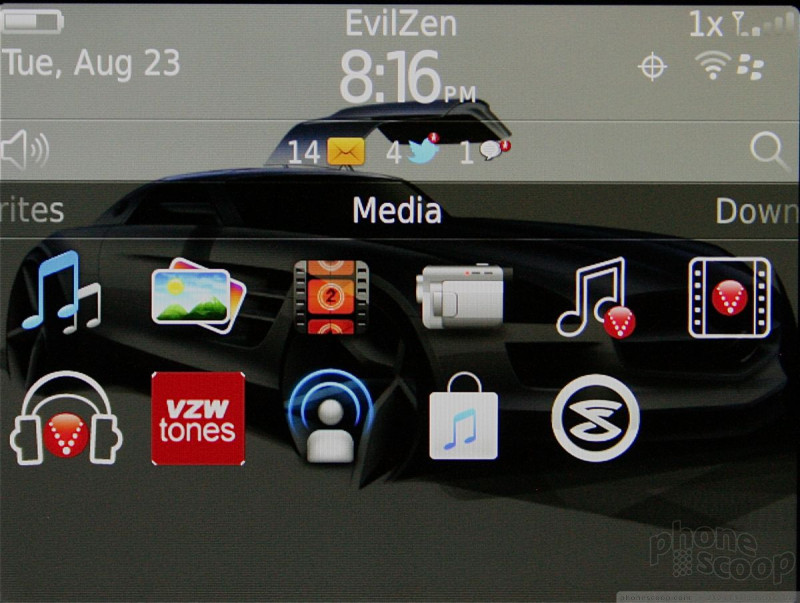



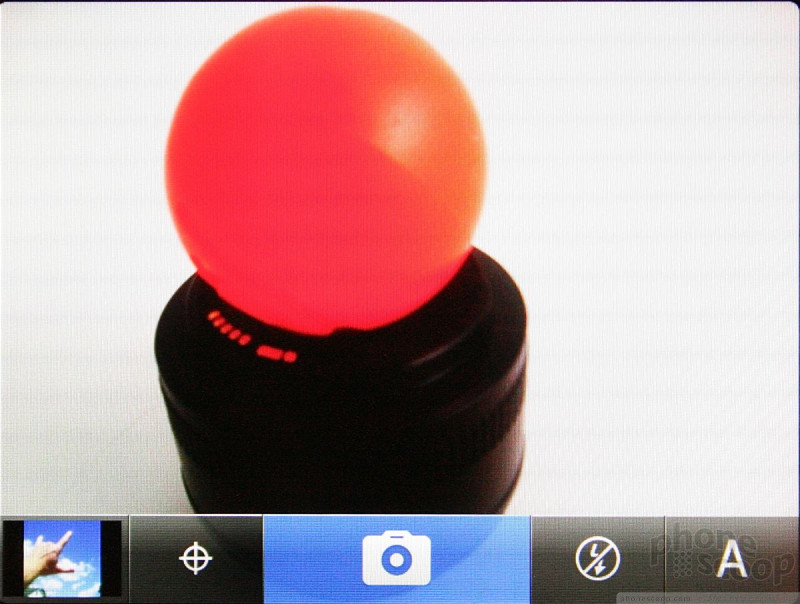



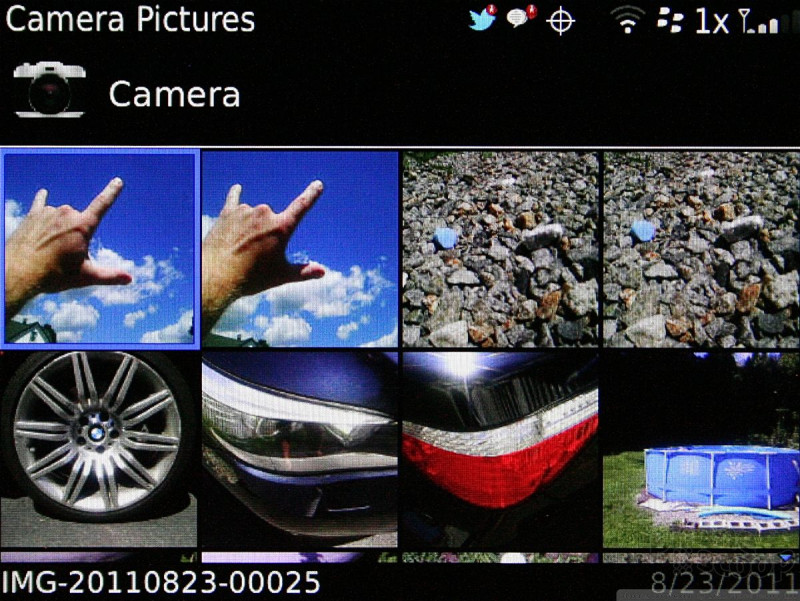




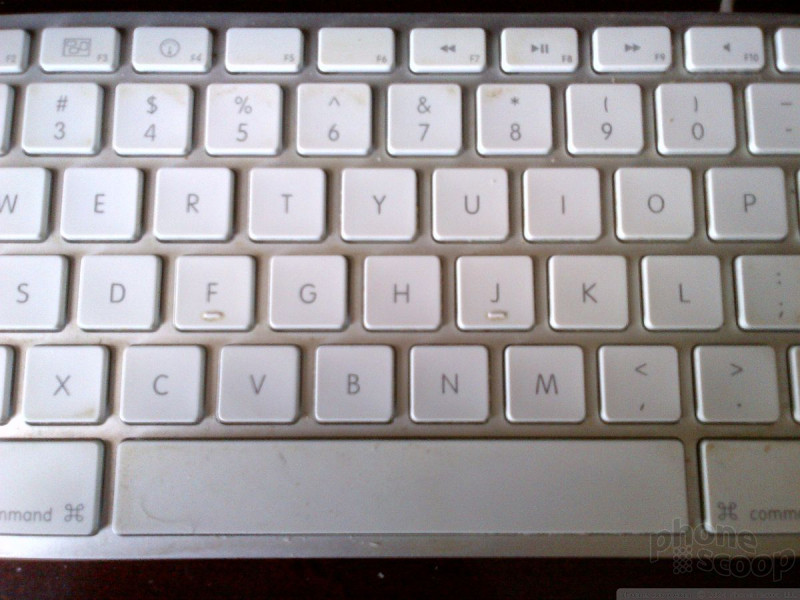














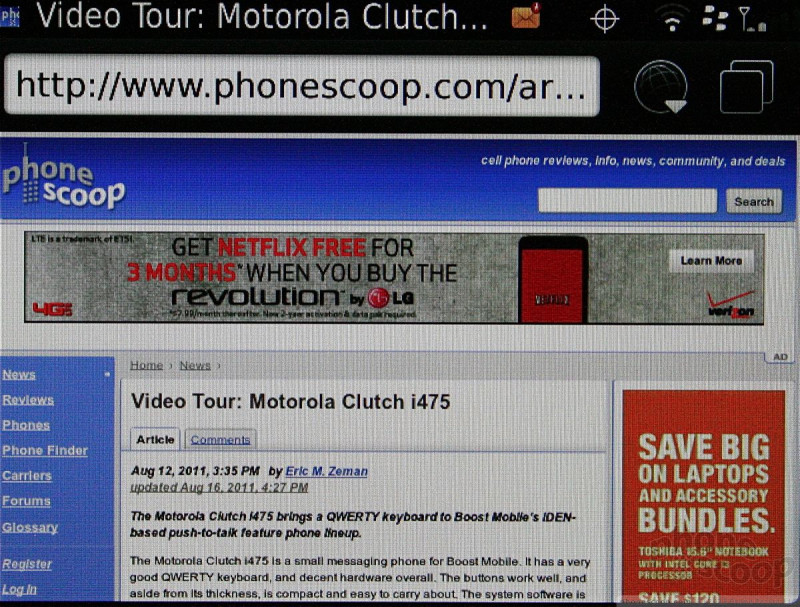



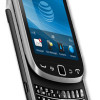 AT&T and RIM Announce 4G BlackBerry Lineup
AT&T and RIM Announce 4G BlackBerry Lineup
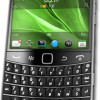 New BlackBerry Bolds Add Touch, NFC, Run OS 7
New BlackBerry Bolds Add Touch, NFC, Run OS 7
 BlackBerry Bold 9900
BlackBerry Bold 9900




